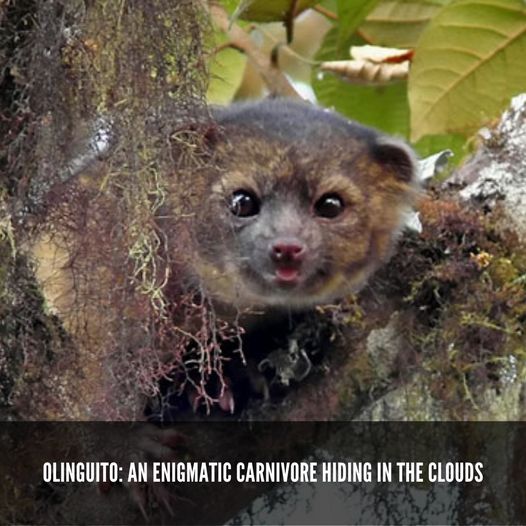The Olinguito, known scientifically as Bassaricyon neblina, was hailed as one of the most captivating zoological discoveries in the early 21st century. This small mammal, a member of the raccoon family, was confirmed as a new species in 2013, capturing the public’s imagination and bringing attention to the rich biodiversity of the cloud forests in South America.
Discovery and Scientific Recognition
The story of the Olinguito’s discovery is as intriguing as the animal itself. For years, it was mistaken for its close relative, the Olingo, and its distinct identity remained unrecognized. Specimens had been collected in the past and even displayed in museums, but their unique characteristics were overlooked. It was only after a comprehensive review of these specimens and field research in the Andes that the Olinguito was correctly identified as a new species by a team led by zoologist Kristofer Helgen.
The scientific name Bassaricyon neblina translates to “misty little fox,” reflecting the Olinguito’s cloud forest habitat and its fox-like appearance. The species name, “neblina,” is Spanish for “fog” or “mist,” which is characteristic of its cloud forest environment.
Physical Characteristics
The Olinguito is a small, tree-dwelling mammal with dense, woolly orange or brown fur, which serves as camouflage in the misty cloud forests it inhabits. Weighing approximately 900 grams (2 pounds) and measuring around 35 centimeters (14 inches) in length, with an equally long tail, the Olinguito is notably the smallest member of the Procyonidae family.

Habitat and Distribution
Olinguitos are endemic to the cloud forests of the Andes in Colombia and Ecuador. These habitats are characterized by high humidity and a consistent cloud cover at the canopy level. Olinguitos are arboreal, spending most of their time in the trees, and are adept at moving through the dense foliage in search of food and shelter.
Diet and Behavior
The Olinguito is nocturnal and primarily frugivorous, meaning its diet consists mostly of fruit. However, it is also known to eat insects and nectar. The Olinguito’s role as a seed disperser is crucial to the health of its ecosystem, making it an integral species within its habitat.
Conservation Status
While the exact population numbers are not known, the Olinguito is already facing threats from human activity. Habitat destruction and fragmentation due to deforestation for agriculture, logging, and urbanization are significant concerns. The species is currently listed as “Data Deficient” by the IUCN, highlighting the need for further research to determine its conservation status.
Efforts to Study and Protect
Since its discovery, there have been concerted efforts to study the Olinguito more intensively to understand its ecology and behavior better. Conservation programs are being developed to protect the cloud forests of the Andes, which are not only home to the Olinguito but to countless other species, many of which may not yet be known to science.
The revelation of the Olinguito’s existence is a potent reminder of the undiscovered biodiversity in the world’s tropical forests and the importance of conserving these environments. As the scientific community and the public have embraced the Olinguito, it has become an ambassador for the cloud forests it inhabits, advocating for the protection of these critical ecosystems for future generations.
